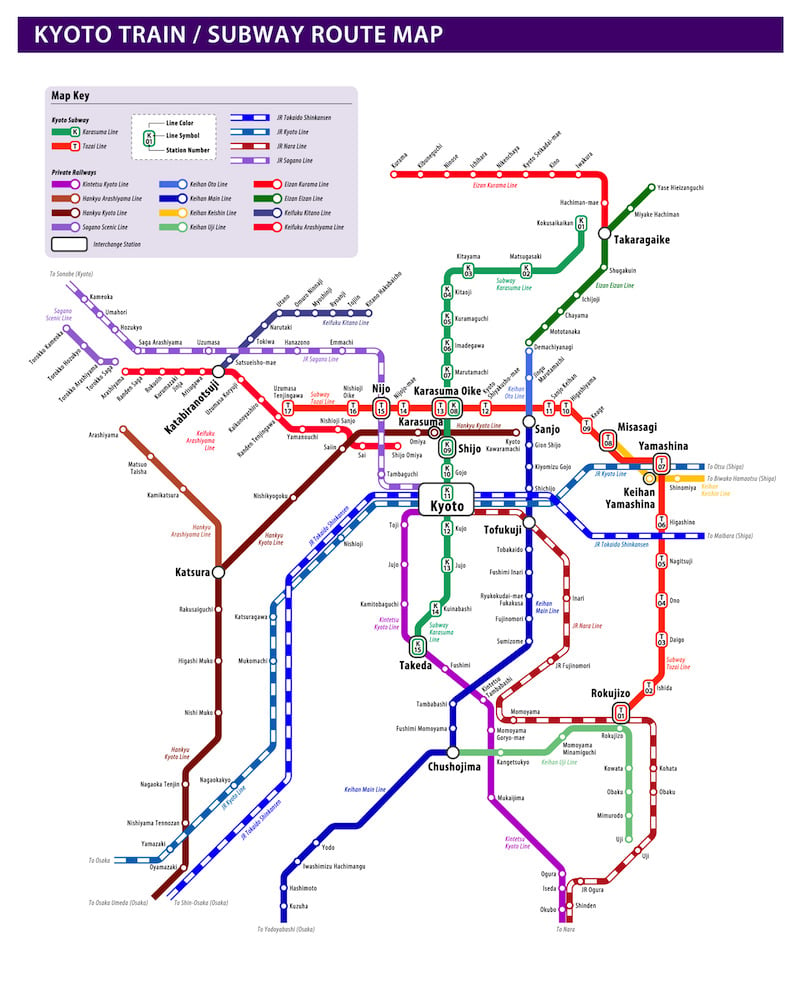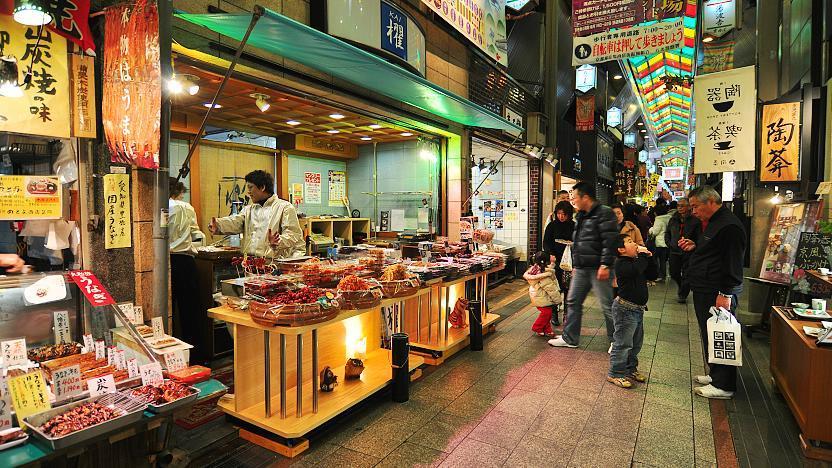
When I moved to Japan, I recall searching for apartments with my Japanese friend. As we scoured various websites, he casually remarked, “Oh, this one is no good. You don’t want a first-floor apartment.”
Taken aback, I asked for an explanation. He responded, “Well, there are two reasons. First, first-floor apartments are more susceptible to mold in humid summers. And second, you don’t want to contend with panty thieves when you hang your laundry out to dry.”
I was bewildered. Panty thieves? Mold? Leaving laundry out to dry? There was so much to learn!
For a foreigner, finding an apartment in Japan can be quite challenging. From the language barrier when dealing with landlords who may not speak Japanese to facing housing discrimination and even simply needing to know the layout of a foreign city you’ve never lived in, the task of moving can be overwhelming.

How do I find an apartment in Kyoto?
You might be wondering how to find a place to live in Kyoto. Despite its smaller size than Tokyo or Osaka, Kyoto can be overwhelming, especially if you’re new to urban living. For starters, consider your workplace or school location. If you’re going to a university like me, living nearby makes sense. However, you’ll likely have more questions. What if the area is expensive or prone to flooding? How do you distinguish the nicer neighborhoods from the sketchier ones?
Knowing the main train lines is also key. Unlike Tokyo or Osaka, Kyoto lacks a central loop, so residents often rely on buses or bicycles. The two subway lines, Karasuma Line (north and south) and Tozai Line (east and west) intersect at Karasuma Oike Station, located in central Nakagyo Ward.
For commuting outside Kyoto, various rail systems, like Japan Railways (JR), connect the city to major destinations. JR Sagano Line takes you to attractions like Arashiyama and Nijo Castle. Private rail operators like Hankyu Railway and Keihan Electric Railway link Kyoto to nearby cities in Kansai. Kintetsu Railway connects Kyoto to Nara, offering access to Kyoto Station and Tofuku-ji Temple.
In addition to trains, Kyoto has a robust bus network for reaching places not directly accessible by train. The Randen tram, officially the Keifuku Electric Railroad, offers a unique mode of transportation, especially in Arashiyama.
When using public transportation, consider getting an IC card (e.g., ICOCA, Suica) for convenient fare payment and a Teiki Ken (commuter pass) if you’ll be commuting regularly. Proximity to a convenient train station for your daily commute may affect where you choose to live.

Another important factor to consider when moving to Kyoto is the cost of living in various city wards. The bad news is that the cost of living in Kyoto can be high, although many factors affect living costs across different neighborhoods. The good news is that Kyoto is a safe place to live, with no particularly dangerous areas. However, you’ll find differences in housing quality, nearby amenities, and more.
Most Expensive Areas:
- Higashiyama: The Higashiyama district, especially around Kiyomizu Temple and Gion, is considered upscale due to its historical charm, proximity to famous attractions, and traditional machiya houses.
- Nakagyo: This ward, which includes parts of the city center, is convenient and can be relatively costly, offering a mix of historical and contemporary living spaces.
- Kamigyo: To the north of the city center, this area is known for its historical significance, offering convenient access to main train lines and famous sites.
Least Expensive Areas:
- Ukyo: Located in the western part of Kyoto, the Ukyo Ward tends to be more affordable than central districts, offering residential neighborhoods and scenic spots like Arashiyama.
- Fushimi: The Fushimi Ward, situated in the south of the city, offers more affordable housing options and a quieter residential atmosphere.
- Sakyo: In northeastern Kyoto, the Sakyo Ward includes suburban areas and budget-friendly residential options, particularly as you move away from the city center.

Keep in mind that the cost of living in Kyoto can also be influenced by factors such as the size and condition of the accommodation and its proximity to transportation, schools, and amenities.
When it comes to finding housing, having a real estate agent can be incredibly helpful. Even if you’re looking for an apartment, real estate agents can assist you throughout the process. For instance, I found an English-speaking agent through Flat Agency who conducted video tours of apartments, explained local neighborhoods, and guided me through housing contracts in English. This made the entire process more transparent and accessible, allowing me to express my preferences and concerns effectively.
I was so satisfied with their service that, when my two-year contract ended, I returned with new requests, such as finding an apartment in a specific district where I could have a pet.
Another valuable resource for anyone moving, especially domestically within Japan, is Kokusai Express Japan. They offer a range of services, including moving trucks, domestic warehouses, cargo forwarding, and machinery transportation, with headquarters in major cities across Japan, such as Tokyo, Yokohama, Osaka, and Kobe.

What do I do when I first arrive in Kyoto?
Before your move to Kyoto, you’ll need essential paperwork for your residency. This includes:
- Passport
- Residency Card (在留カード)
- Recent photograph
- Residential address
Always consult Japan’s Ministry of Foreign Affairs for the most up-to-date requirements for your specific situation. Upon arriving in your new location, including Kyoto, visit the local ward’s office to update your address.
Of course, having a job is also important. There are many ways of finding a job, including using the website Jobs in Japan to find opportunities! For visa guidance in Japan, see our guide to different visa options.
The next question is where to acquire the essentials for your new home. Moving often requires furniture, bedding, and basic household items. Unlike my experience with a fully furnished apartment, many Japanese apartments come with minimal furnishings, sometimes lacking even a washing machine or fridge.
In Kyoto, a cost-effective option is Gakusei Recycle (学生リサイクル), a second-hand shop popular among college students. It offers basic furniture and amenities like washing machines.
Another viable choice is Hard Off! (pardon the funny name), a second-hand shop with a diverse range of items, from clothing to furniture.
Amazon is a reliable option for convenience, especially if you lack a spacious vehicle for transporting heavy items. If you’re on a tighter budget, Amazon has a used section where you can find more affordable second-hand alternatives. However, always scrutinize product reviews and condition descriptions before making a purchase.

What resources can help me with life in Kyoto?
After you’ve settled into life in Kyoto, certain concerns might arise, especially if you’re dealing with everyday services like medical care. The approach to healthcare in Japan can differ from what you’re accustomed to, particularly in comparison to the United States. Walk-in clinics with general practitioners are less common here, and in Kyoto, locating English-speaking services can be more challenging than in larger cities like Osaka and Tokyo.
Fortunately, the Kyoto City International Foundation can be a valuable resource. It provides lists of hospitals and dental clinics and guidance on seeking assistance and emergency protocols. Most medical services will be accommodating if you speak Japanese, as doctors use simpler terms and explanations. However, there are cases of medical practitioners refusing service to foreigners out of concern about language barrier issues, or you might want to speak to a practitioner in your native language. Therefore, a list of English-speaking medical services can be found for those with limited Japanese abilities.
For broader medical information and consultations throughout Japan, consider the AMDA International Medical Information Center. This nonprofit group offers telephone consultations to provide medical guidance to foreigners. Another helpful service, regardless of your location in Japan, is Clinic Near Me, which I’ve used to find online English consultations for feminine healthcare.
In emergencies, it’s important to know the numbers to call. Ambulance and fire services can be reached at 119, while the police can be contacted at 110. Interpretation services are available in English, Chinese, Korean, Spanish, and Portuguese when calling 119. You can also visit a nearby Koban (police box), though English services may not be guaranteed. For further emergency and disaster tips, refer to this source.
If you’re not a student but still wish to learn Japanese, options are available in Kyoto. Language schools like ISI or ARC offer classes, and the Kokoka Kyoto International Community House hosts options like the Volunteer’s Room Japanese Class, open to all levels for just 100円 per lesson. Additionally, introductory and elementary-level easy Japanese classes are available. You can explore classes at the Kyoto Prefectural International Center, Kyoto International Cultural Association, Kyoto YWCA, or Fushimi Youth Center. For a comprehensive list of options, visit the Kyoto City International Foundation’s page on Japanese Classes. Learning at least survival-level Japanese can enhance your daily life in Kyoto.

What is the culture like in Kyoto?
Addressing this question can be quite challenging. Before moving to Kyoto, I lived in Nara, which has a vastly different atmosphere from Kyoto. While Kansai, as a region, is often associated with being more expressive, talkative, and outgoing compared to Tokyo, Kyoto doesn’t fully conform to this stereotype.
Upon my arrival in Kyoto, I quickly noticed that people here can be more reserved than those in Nara. In Nara, if I sat at a bus stop, it was almost guaranteed for a local grandma to sit beside me and start a friendly conversation. However, during the initial month in Kyoto, my neighbors rarely made eye contact, and many seemed skeptical of a foreign newcomer. It was the first time I encountered comments about being a “gaijin” (foreigner), an experience absent during my time in Nara.
Unless you’re entering a language school or already have friends in the area, the initial couple of months in Kyoto might feel lonely. Building friendships in Kyoto is a slower process, so it’s advisable to establish connections as early as possible. Joining online groups on Facebook or via LINE can help kickstart this process. Occasionally, you may come across gatherings where locals socialize with foreigners but be aware that locals are often present to practice their English with you.
Another option is to visit local bars if you’re interested. In my experience, I made friends by frequenting local bars and gradually connecting with fellow patrons, although this did require a fair amount of Japanese language skills. But do note, always be responsible when frequenting drinking establishes and always prioritize your own safety.
Overall, it’s important to remember that not forming close friendships in your initial months in Kyoto doesn’t equate to failure. While people in Kyoto may initially appear distant and reserved, they are genuinely friendly. Most Kyoto residents simply take time to warm up. Over time, many of my initially reserved neighbors became more welcoming, greeting me each time we crossed paths and engaging in small talk. Similarly, I managed to make local friends and establish a community.
Don’t take it personally if people aren’t initially overly friendly with you. Being considerate and kind to those around you will likely lead to reciprocal warmth once they get to know you better. In no time, you’ll find your place in Kyoto!

















